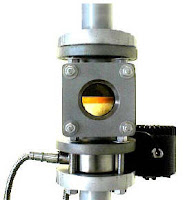Self-regulating heater cable is a parallel circuit electric heater strip. An irradiation cross- linked conductive polymer core material is extruded over the multi-stranded, tin-plated, 18-gauge copper bus wires. The conductive core material increases or decreases its heat output in response to temperature changes. A thermoplastic elastomer dielectric jacket is then extruded over the conductive core. A copper braid is installed over this jacket providing a continuous ground path. A UV stabilized thermoplastic elastomer overjacket is provided to cover the braid for wet applications and exposure to the sun.
Principle of Operation:
The parallel bus wires apply voltage along the entire length of the heater cable. The conductive core provides an infinite number of parallel conductive paths permitting the cable to be cut to any length in the field with no dead or cold zones developing. The heater cable derives its self- regulating characteristic from the inherent properties of the conductive core material. As the core material temperature increases, the number of conductive paths in the core material decreases, automatically decreasing the heat output. As the temperature decreases, the number of conductive paths increases, causing the heat output to increase. This occurs at every point along the length of the cable, adjusting the power output to the varying conditions along the pipe. The self-regulating effect allows the cable to be overlapped without creating hot spots or burnout. As the cable self-regulates it heat output, it provides for the efficient use of electric power, producing heat only when and where it is needed, and also limiting the maximum surface temperature.
Application:
Self-regulating heater cable is ideal for use in maintaining fluid flow under low ambient conditions. Freeze protection and low watt density process temperature systems such as pipelines, fire protection, process water, dust suppression systems, hot water and structure anti-icing are typical applications for this product. For other than metal pipe heating, see appropriate application guide. The base product is supplied with a copper metal braid with a thermoplastic elastomer overjacket for wet applications, exposure to the sun, and where mechanical abuse is a problem. Cables are UL Listed and CSA Certified for use in non-hazardous locations and can be used on branch sprinkler systems.



